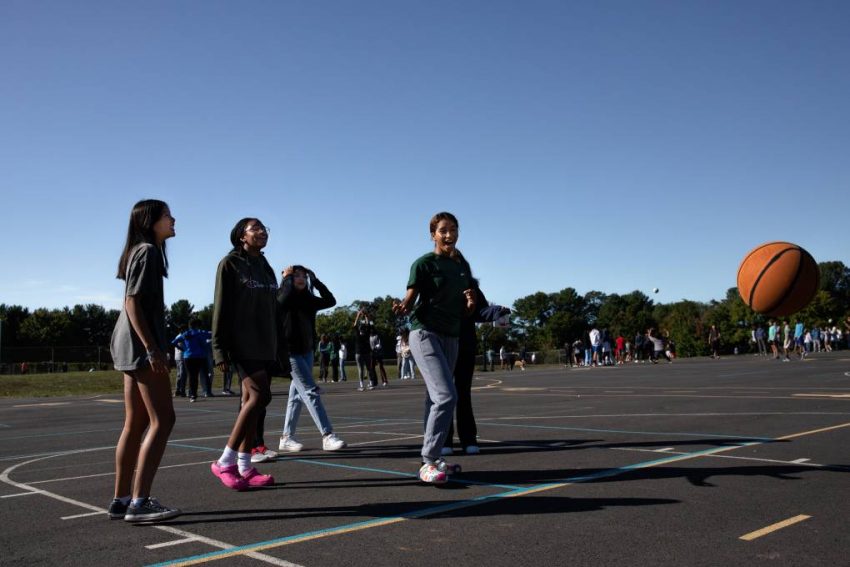
Even the college’s principal, Amy Goodloe, agrees that play is necessary. “There’s actually excessive worth for college kids and, I’ll underscore, lecturers to have that break within the day,” she stated. “We underestimate how necessary that’s as a accomplice to educational studying.”
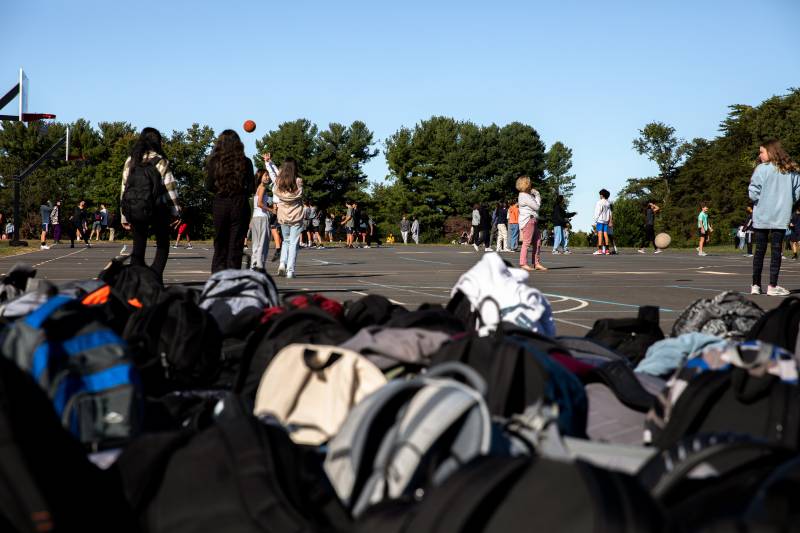
However Fairfax County is an exception. In most communities, alternatives for play and playful studying are likely to recede in center faculty, changed by direct instruction, aggressive sports activities and tightly structured educational time. Educators and researchers say college students pay the worth. Younger adolescents undergo profound physical, emotional and physiological changes; play inside and outdoors the classroom can present a method for kids to develop healthy bonds with friends and become more self-confident.
“I train at a Okay-Eight faculty, and once I take a look at these seventh and eighth graders, they’re no completely different than the kindergarteners,” stated Robert Lane, a STEM instructor on the Sierra Verde STEAM Academy in Glendale, Arizona. “They get excited once I convey out Play Doh and googly eyes.”
Lane’s class is solely constructed round playful studying. For instance, the modeling clay and different crafts had been used as a part of a stop-motion animation challenge in his classroom. Different actions for the college’s older college students included creating cardboard curler coasters to be judged by the college’s second graders and constructing a robotic that may transfer with out wheels.
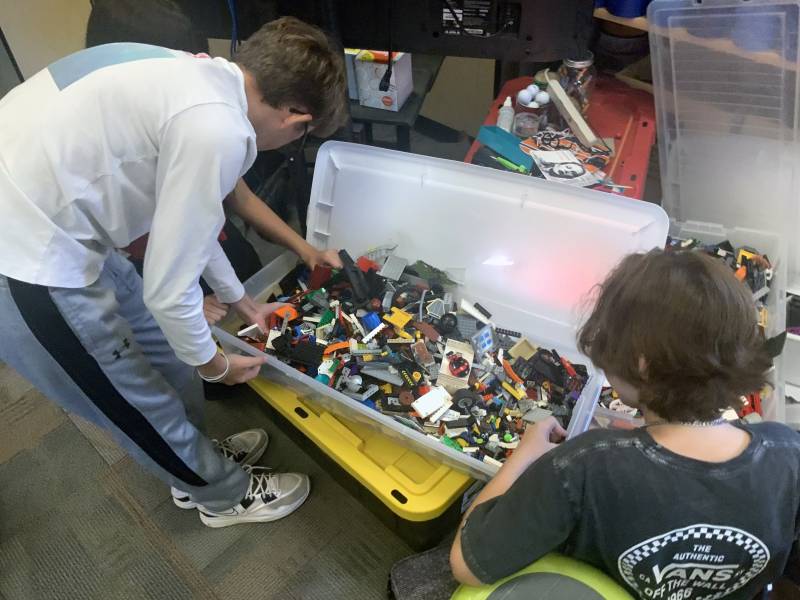
“I break them into teams the place they don’t know one another they usually simply go all in,” stated Lane, who additionally hosts a podcast as “Mr. Lane the STEM Man.” The actions additionally give his college students an opportunity to learn to cooperate, settle for failure when it occurs, and resolve issues as a group, he stated.
“I would like these youngsters to have all these tender expertise as they get able to go to highschool and to school,” Lane stated.
Along with growing tender expertise, recess is a device that may get adolescents shifting extra at a time of life once they develop into way more sedentary.
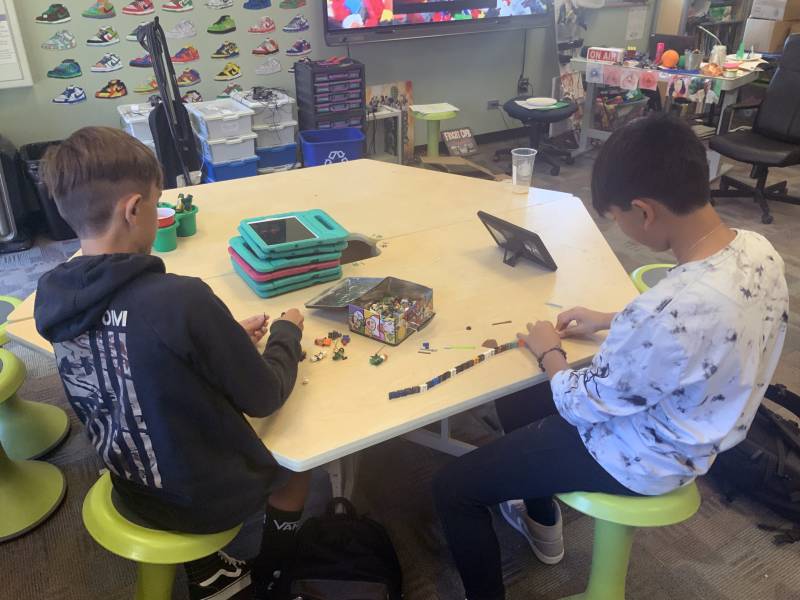
A 2008 study in the Journal of the American Medical Association used accelerometers to seize the exercise ranges of youth from ages 9 to 15. 9-year-olds, on common, engaged in three hours of reasonable to vigorous exercise on weekends and weekdays, nicely above the recommendation of 60 minutes a day from the Facilities for Illness Management and Prevention. The researchers discovered that exercise ranges plunged as kids reached adolescence. By age 15, they had been getting a median of 49 minutes on weekdays and 35 minutes on weekends.
With advantages that seem so clear, why does center faculty appear to mark an finish to each unstructured play time and playful studying? There are a number of competing challenges, each logistical and social.
Center faculties typically have extra college students than elementary faculties, and the scholars themselves are taller and heavier. It’s difficult for varsity leaders to search out sufficient house and instructor supervision to handle a whole bunch of kids throughout a break time. The supervision is especially necessary as a result of, whereas center schoolers crave time with their buddies, unstructured time like recess, lunchtime and passing between courses usually provides fertile opportunities for bullying.
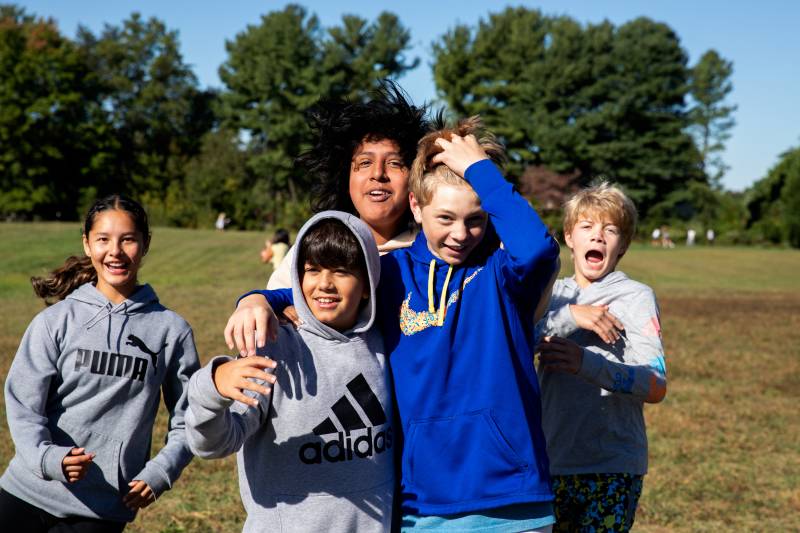
Fairfax County educators needed to provide you with new options. “The logistics had been a bit of bit laborious to determine,” stated Cynthia Conley, the principal of Washington Irving Center College in Springfield, Virginia. Irving, with about 1,200 students, is without doubt one of the Fairfax County faculties that has added recess to its schedule.
“We’ve got 4 lunch shifts, and we had to determine easy methods to have 4 breaks,” stated Conley. To accommodate all the scholars on break at any given time, directors have opened up a number of completely different recess areas for college kids, together with the gymnasium, the blacktop, and the library, which options chess units, card video games, and an train bike with a built-in bookstand.
“As quickly as their ft hit the surface they’re taking pictures, throwing, no matter they take into account,” Conley stated. “I’ve heard folks say, why do they want a break. In the event you can, discover me an grownup who doesn’t want a 15-minute break throughout their work day. All people takes a break, to look away from the display a bit of bit.”
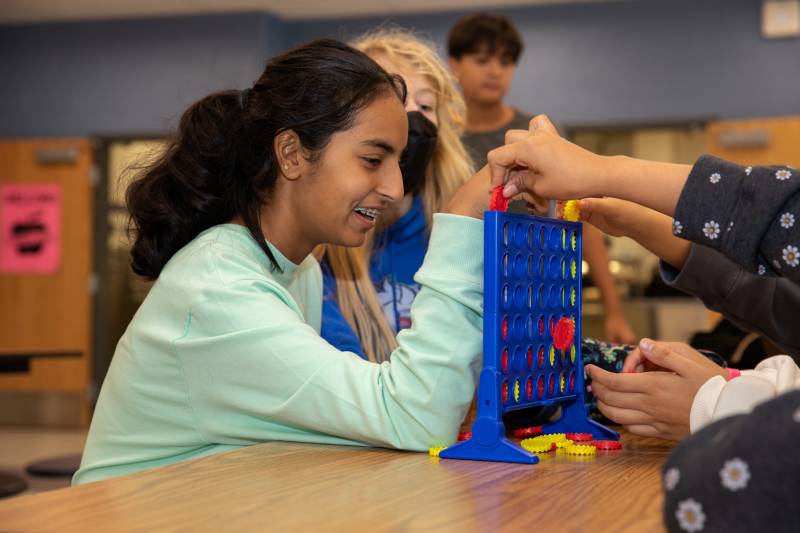
An extra problem is that center faculty college students don’t suppose like youthful college students. Some athletic tools received’t be sufficient to interact all, and even most of them.
Rebecca London, a professor of sociology on the College of California, Santa Cruz, has studied what occurs when educators add break or recess time for center faculty college students. Within the center faculties she noticed, the sports activities actions had been usually dominated by older boys. Youthful girls and boys, even athletes, tended to spend break occasions strolling and speaking until faculties made an additional effort to arrange actions that might entice them.
One highly effective approach to try this is for adults to play alongside college students, even when adolescents generally act as in the event that they need to get away from adults.
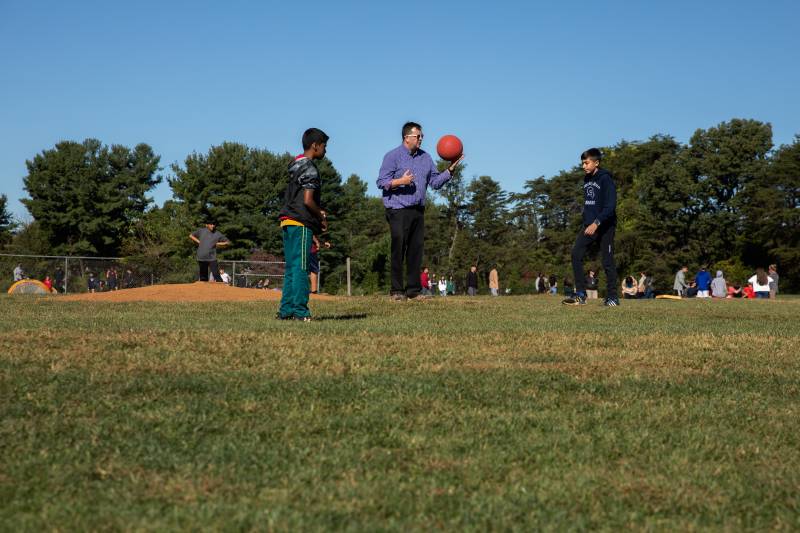
“As quickly because the adults begin enjoying, the youngsters need to play,” London stated. “Youngsters inherently crave that. It’s a possibility for youths to be seen as an knowledgeable or a frontrunner.” A heat grownup presence additionally makes the scenario really feel safer for college kids who might not be sports activities stars.
“For all these causes, it’s nice to have adults on the market main video games, connecting with college students in numerous methods,” she stated.
Fairfax County piloted a center faculty recess break for the 2021-22 faculty 12 months. Final April, the college board voted to make the break mandatory for all of the district’s center faculties, beginning in 2022-23. District policy for elementary college students requires at the least 30 minutes of recess a day over two segments. There is no such thing as a recess coverage within the district for highschool college students.
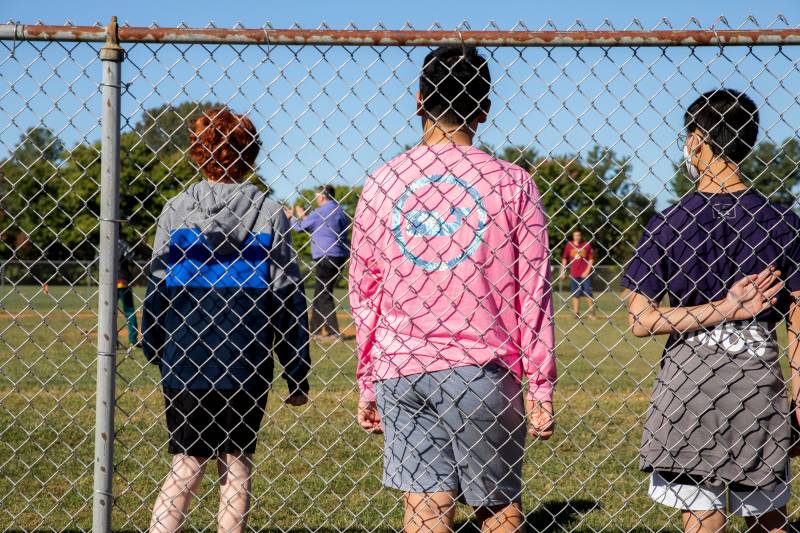
Advocates for the change say it crammed an actual want. “All of our college students want a while to rejuvenate,” stated Ricardy Anderson, one of many champions of the recess coverage on the college board and a former center faculty principal. “We’ve got center faculty college students that get into the constructing at 7:15 within the morning they usually don’t go away the constructing till 2:30.”
Anderson stated that’s why it’s important for college kids “to have a bit of little bit of freedom to do what they’d love to do — to be freed from the noise of the cafeteria. simply to get some contemporary air, simply to have a bit of break within the day. The outside element is much more essential.”
Mother and father of elementary faculty kids are sometimes the driving drive behind recess insurance policies, however London, the sociology professor, hasn’t seen that very same stage of power behind break occasions for older college students. She thinks the isolation youngsters skilled through the first part of the pandemic makes break time much more essential. “It’s going to take a very long time earlier than these youngsters are totally recovered,” she stated. “We might have much more play for older youngsters.”
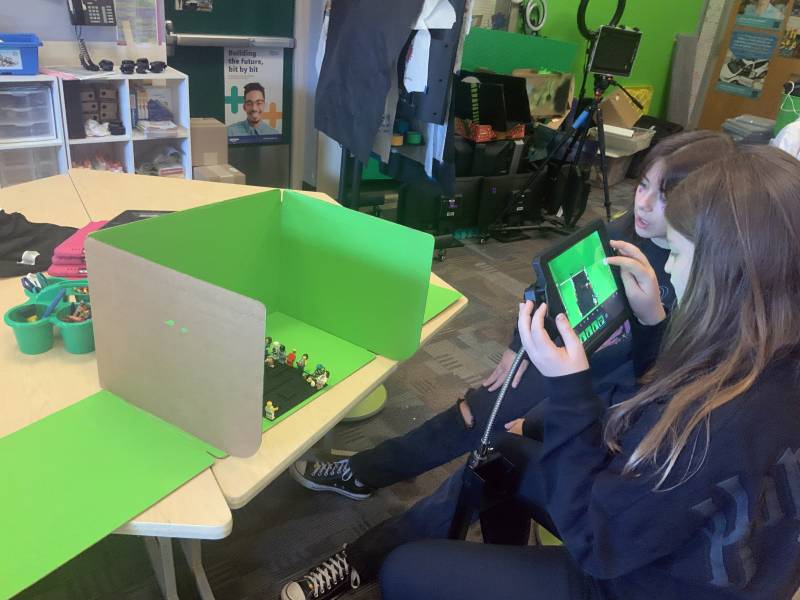
Lane, on the Sierra STEAM Academy, stated that one other barrier could also be dad and mom and college directors who could not see the significance of playful studying.
“Academics are beneath a lot stress to get to a sure level,” he stated, they usually’re additionally beneath a microscope. Mother and father may not perceive why class time is spent on playful studying versus extra clearly educational pursuits, for instance.
Seventh and eighth graders spend 1 / 4 annually engaged in hands-on tasks in his classroom, including as much as a semester of lively studying. These actions permit college students to discover their passions and in addition perceive why failure is a part of studying, Lane stated. “That’s a Okay-Eight factor, campus-wide. We don’t get pissed off. We come again, we play smarter. And the seventh and eighth graders, they crave it.”
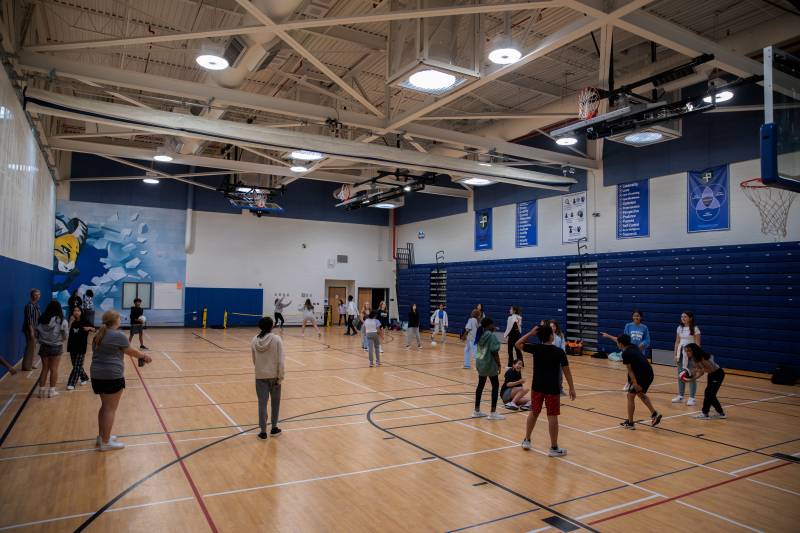
Regardless of the difficulties which will include determining easy methods to squeeze play into higher grades, London stated faculty leaders take pleasure in a set of opinionated specialists — the scholars themselves.
“In the event you’re going to start out a recess, it’s best to ask your college students what they need to do in that point,” he stated. “You may even create a college local weather job drive; the scholars who volunteer to assist take into consideration that point may be tapped as leaders. They know what they want.”
















